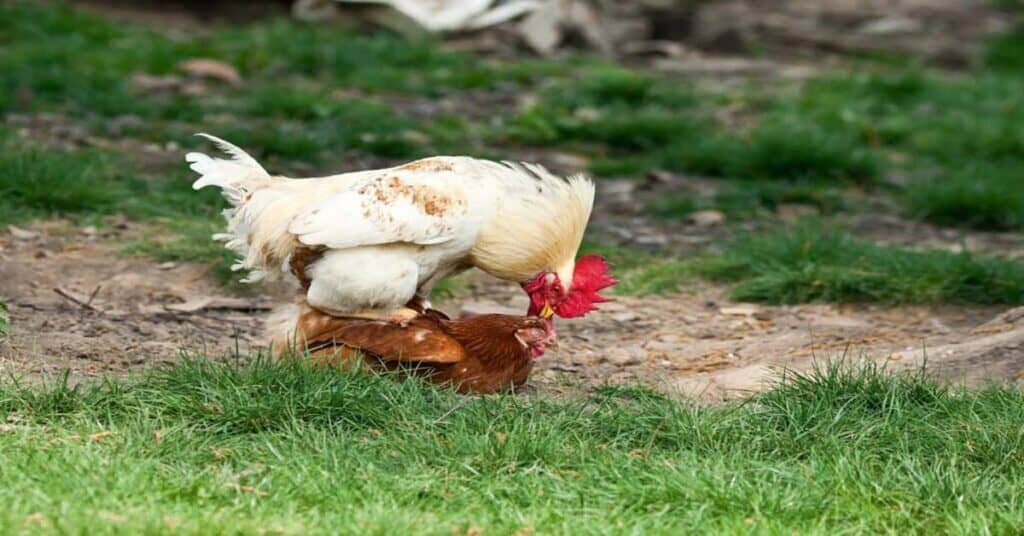The Art of Outcrossing: A Breath of Fresh Genetics in Breeding
September 21, 2023
Conclusion
Outcrossing is a valuable breeding method that can contribute to the genetic health and diversity of various species. By carefully selecting individuals from different populations and planning breeding programs, breeders can harness the benefits of outcrossing while minimizing potential challenges. This approach plays a crucial role in the long-term sustainability and adaptability of breeds, species, and crops, ensuring that they remain resilient in the face of evolving challenges and changing environments. Ultimately, the art of outcrossing is a testament to the skill and dedication of breeders who seek to improve and preserve the genetic diversity of our world.

Breeding is both an art and a science, a delicate balance between preserving desirable traits and introducing new genetic material. One method that plays a crucial role in maintaining genetic diversity and health in various species is outcrossing. This approach involves mating individuals from different but related populations, and it offers numerous advantages for breeders seeking to improve their stock. In this article, we will explore the outcrossing breed method, its benefits, challenges, and its critical role in the world of breeding.
What Is Outcrossing?
Outcrossing, sometimes referred to as “outbreeding,” is a breeding method that involves mating two individuals from the same species but with little or no common ancestry. The goal of outcrossing is to introduce new genetic material into a breeding population, increasing genetic diversity. This diversity can help reduce the risk of inherited diseases, enhance adaptability to changing environmental conditions, and improve overall vigor and health in the offspring.
Benefits of Outcrossing
Genetic Diversity: One of the primary benefits of outcrossing is the introduction of genetic diversity into a population. Genetic diversity is essential for the long-term health and adaptability of any species or breed. It can help mitigate the effects of inbreeding, which often results in the expression of recessive genetic disorders.
Hybrid Vigor: Outcrossing can lead to hybrid vigor, also known as heterosis. When two genetically distinct individuals are mated, their offspring may exhibit improved traits, such as increased growth rate, disease resistance, and overall robustness. This can be especially valuable in livestock and plant breeding.
Disease Resistance: By introducing new genes into a population, outcrossing can enhance resistance to diseases and pests. This is particularly important in agriculture, where monoculture can make crops susceptible to widespread devastation from a single pathogen.
Adaptation to Changing Environments: Genetic diversity resulting from outcrossing can improve a population’s ability to adapt to changing environmental conditions, such as climate change. Diverse genetic material increases the chances of some individuals having traits that are better suited to new challenges.
Preservation of Unique Traits: Outcrossing can help preserve unique and valuable traits that may be lost due to inbreeding. It allows breeders to maintain a healthy population while still retaining the characteristics that make a particular breed or variety special.
Challenges of Outcrossing
While outcrossing offers numerous advantages, it is not without its challenges:
Loss of Breed Characteristics: Outcrossing can dilute or alter specific breed characteristics or traits that breeders have worked hard to establish. Careful selection and planning are necessary to maintain these unique qualities while outcrossing for genetic diversity.
Genetic Compatibility: Ensuring genetic compatibility between individuals from different populations can be challenging. Compatibility issues may lead to reproductive problems or offspring that do not meet breeding objectives.
Record Keeping: Maintaining accurate pedigree records becomes more complicated when outcrossing, as it involves tracking individuals from different lineages.
Selective Breeding: Breeders must exercise caution when selecting individuals for outcrossing to avoid introducing undesirable traits or characteristics.
Time and Resources: Outcrossing requires careful planning and investment of time and resources to identify suitable mates and monitor the results.
